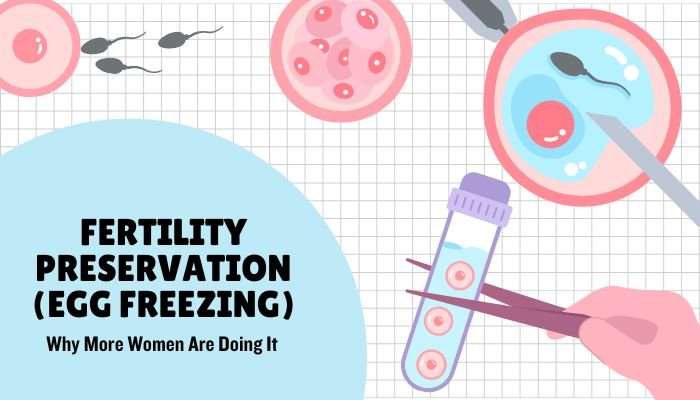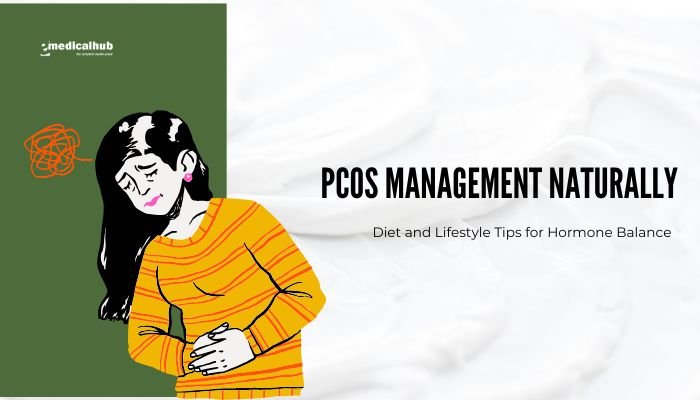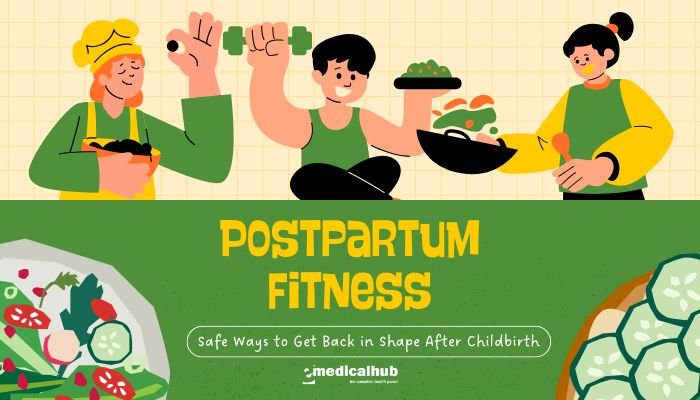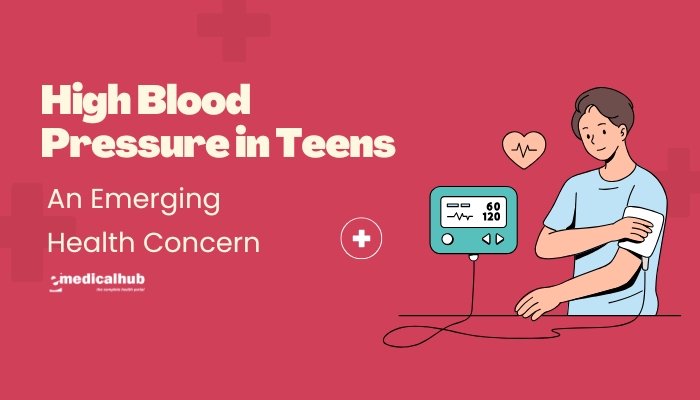Introduction
Fertility preservation, especially egg freezing, is becoming more popular. Women freeze eggs for many reasons: focusing on careers, taking time for personal goals, or delaying parenthood while staying in control of future fertility.
Sometimes, medical reasons—such as chemotherapy—lead to the decision. This technology, once experimental, is now more common. It can give a sense of comfort and future family options.
This article explains how egg freezing works, why more women are doing it, success rates, costs, and factors to consider. It also addresses the step-by-step process and what to expect physically, emotionally, and financially. By understanding egg freezing, you can decide if it aligns with your personal plans and health goals.
Understanding Egg Freezing
Basic Concept
Egg freezing (oocyte cryopreservation) is when a woman’s eggs are extracted, frozen, and stored for potential future use. When she is ready for pregnancy, these frozen eggs can be thawed, fertilized, and implanted in the uterus through in vitro fertilization (IVF).
Quote: “Egg freezing offers flexibility by safeguarding younger, healthier eggs for possible pregnancies later.”
The Goal of Fertility Preservation
- Delaying Pregnancy: Some aim to have children in their late 30s or 40s but want to store younger eggs.
- Medical Reasons: Before cancer treatment or serious ovarian surgery, some freeze eggs to guard against treatment-related fertility loss.
- Family Building Options: Women without a partner but desiring children may want egg freezing as insurance.
Key Steps in Egg Freezing
- Ovarian Stimulation: Medications prompt the ovaries to produce multiple mature eggs.
- Egg Retrieval: A minor procedure uses an ultrasound-guided needle to collect eggs from the ovaries.
- Freezing and Storage: Eggs are flash-frozen using vitrification, a rapid freezing method that protects them from ice crystal damage.
- Future Use: When pregnancy is desired, eggs are thawed, fertilized, and transferred to the uterus via IVF.
Why More Women Are Freezing Their Eggs
Career and Personal Goals
- Delayed Childbearing: Modern lifestyles often involve long education, career goals, and financial stability aspirations. Egg freezing can help manage the biological clock.
- Flexibility: Women want to plan pregnancy at a stable point in their personal or professional lives.
Uncertain Relationships or Timing
- Lack of Suitable Partner: Some have not found the right partner but do not want to lose fertility options.
- Avoiding Pressure: This may ease the tension of having children under time constraints.
Medical Factors
- Cancer Treatments: Radiation or chemotherapy can harm ovaries. Pre-treatment egg freezing preserves fertility.
- Surgery: Ovarian surgery for endometriosis or other conditions might reduce egg reserves.
- Genetic Risks: Certain hereditary diseases can lead to early menopause. Freezing eggs early is one strategy.
Workplace Benefits
- Employer Coverage: Some companies offer egg freezing benefits to attract and retain talented staff.
- Cultural Shift: As it becomes more common, stigma decreases. Women feel more comfortable choosing egg freezing.
Technological Progress
- Vitrification Success: Better cryopreservation techniques have improved egg survival and pregnancy rates post-thaw.
- Reduced Risk: The process is safer and has a longer track record, encouraging more women to try it.
Biology of Fertility and Egg Quality
Age and Fertility
- Egg Supply: Women are born with a set number of eggs (~1–2 million). This declines over time. By puberty, around 300,000–400,000 eggs remain.
- Quality Decline: Egg quality worsens with age, rising miscarriage and chromosomal abnormality risks.
- Fertility Window: While each woman is unique, fertility commonly drops in the early 30s and more quickly after 35.
Ovarian Reserve
- Hormones: Follicle-stimulating hormone (FSH), anti-Müllerian hormone (AMH), and estradiol can help estimate remaining egg supply.
- Ultrasound: Antral follicle count can show how many egg-containing follicles are visible in the ovaries at the start of a cycle.
- Egg Freezing Timing: Usually recommended earlier, when egg quality is higher.
Menopause Timeline
- Average Age: 51 in many regions, though perimenopause (fertility decline) can start years earlier.
- Family History: If a mother had early menopause, a daughter may face it, too. Egg freezing can provide a buffer if early menopause is likely.
Key Tip: Understanding your ovarian reserve can help decide if egg freezing is beneficial and when to do it.
The Egg Freezing Process
Initial Consultation
- Medical Review: A fertility doctor reviews health history, family background, and goals.
- Ultrasounds and Bloodwork: Check baseline ovarian reserve (AMH, FSH, antral follicle count).
- Personalized Plan: Protocols can differ based on age, hormone levels, and other factors.
Ovarian Stimulation
- Daily Injections: Hormones (e.g., FSH) help multiple eggs develop at once.
- Monitoring: Ultrasounds track follicle growth; blood tests measure hormone levels.
- Possible Side Effects: Bloating, mood changes, mild cramping. Some have stronger reactions; the clinic monitors progress carefully.
Trigger and Egg Retrieval
- Trigger Shot: When follicles are mature, a “trigger” injection finalizes egg maturity (often hCG or a GnRH agonist).
- Procedure: Under sedation, a thin needle (guided by ultrasound) retrieves eggs through the vaginal wall. Takes about 20–30 minutes.
- Recovery: Mild cramps or spotting for a day or two. Light activity after the procedure is often fine.
Freezing (Vitrification)
- Lab Preparation: A skilled embryologist examines the collected eggs and chooses mature ones for freezing.
- Rapid Cooling: Vitrification plunges eggs into liquid nitrogen, preventing ice crystals.
- Storage: Frozen in specialized tanks; remain stable for many years if properly maintained.
Thawing and Future Fertilization
- Use in IVF: When a woman is ready, the clinic thaws eggs, fertilizes them with sperm, and observes embryo development.
- Embryo Transfer: A developed embryo is transferred to the uterus. Surplus embryos can be refrozen or discarded.
- Pregnancy Rate Variations: Dependent on age at freezing, number of eggs, lab quality, and overall health.
Success Rates and Limitations
Egg Survival and Pregnancy Outcomes
- Vitrification Improvements: Survival rates upon thaw can exceed 90% in skilled labs.
- Fertilization and Implantation: Not all surviving eggs will fertilize or develop into viable embryos. The typical “live birth rate” from frozen eggs is lower than from fresh ones, but it continues to improve.
- Important Factors: Age at egg retrieval strongly affects success. Freezing eggs in the late 20s or early 30s generally leads to higher birth rates than freezing after 35.
Number of Eggs Needed
- Egg Yield: Not every cycle yields the same number of eggs.
- Multiple Cycles: If a woman wants a better chance for future pregnancy, she might do repeated stimulations to store more eggs.
- Variation Among Clinics: Different clinics can have varying lab protocols, so success rates differ.
Age Constraints
- Best Time: Earlier is typically better. However, personal situations might not allow for early freezing.
- Beyond 40: Some clinics do not recommend freezing after 40 due to diminishing returns, but this is individual.
No Guarantee
- Future Uncertainty: Frozen eggs do not ensure a baby. They raise chances but are not foolproof.
- Ethical and Emotional Weight: It’s an investment with no definite outcome, so counseling is key.
Cost Considerations
Upfront Expenses
- Medications: Hormonal injections can be expensive.
- Retrieval Procedure: Clinic fees for anesthesia, retrieval, and lab tests.
- Freezing: Cost for the vitrification process.
Ongoing Storage Fees
Future IVF Costs
- Thawing and Fertilization: Another fee for lab work when you decide to use them.
- Embryo Transfer: Includes medication and monitoring.
- Insurance Coverage: Some insurances or company benefits partially cover. Others pay out of pocket.
Key Tip: Compare clinics, ask about financial plans, and weigh total cost when deciding how many cycles to undergo.
Emotional and Ethical Perspectives
Emotional Factors
- Hope vs. Anxiety: Storing eggs can reduce the stress about “aging out” of fertility. But it may also raise questions about waiting.
- Uncertainty: The knowledge that egg freezing is not a sure bet.
- Support Systems: Counseling or connecting with others can help handle complexities.
Ethical Debates
- Social Egg Freezing: Some argue it medicalizes a social issue and pressures women to delay childbirth for careers. Others see it as a personal choice that increases reproductive autonomy.
- Discarding Unused Eggs: If eggs remain unused, what happens? Some clinics keep them long term, others require decisions about donation or disposal.
- Employer Incentives: Workplace egg freezing coverage stirs discussion about how it influences career vs. family decisions.
Partner Involvement
- Single Women: Often choose this route independently.
- Couples: May decide if they freeze eggs alone, or create embryos (which have legal implications if the relationship changes).
- Communication: Clear discussion about the future is crucial.
Medical Conditions and Egg Freezing
Cancer or Autoimmune Treatments
- Before Chemo/Radiation: Many are advised to freeze eggs if time allows, because these therapies can damage ovarian function.
- Timing: Rapid “emergency” protocols for fertility preservation can happen in weeks prior to medical treatment.
Endometriosis
- Ovarian Damage Risk: Endometriosis can damage egg reserve. Freezing eggs at earlier stages might help future fertility.
Genetic Disorders
- Premature Ovarian Failure Risk: Women at higher risk (e.g., Fragile X premutation) might preserve eggs early.
- Testing: Genetic counseling plus fertility planning is recommended.
Day-to-Day During the Process
Daily Hormone Injections
- Self-Administration: Short, thin needles for subcutaneous shots.
- Monitoring: Every few days, you visit the clinic for ultrasound and blood tests.
Physical Side Effects
- Bloating and Mood Changes: Estrogen levels rise, similar to PMS symptoms.
- Mild Cramping: The ovaries enlarge with multiple follicles.
- OHSS (Ovarian Hyperstimulation Syndrome): Rare, but can cause fluid buildup. The clinic monitors for signs like severe bloating, shortness of breath, or rapid weight gain.
Scheduling Logistics
- Frequent Clinic Visits: Usually early morning checkups to measure follicles.
- Lifestyle Adjustments: Some avoid strenuous exercise or sexual intercourse in late stimulation to reduce ovarian torsion risk.
- Time Off Work: The retrieval day and a bit of rest afterward might be needed.
Key Tip: Plan your schedule around 10–14 days for stimulation and retrieval.
Myths vs. Facts about Egg Freezing
- Myth: “Freezing eggs guarantees a baby.”
Fact: It increases options but does not ensure pregnancy. - Myth: “I can freeze my eggs at any age.”
Fact: Egg quality declines with age, so earlier is usually more effective. - Myth: “Freezing eggs is only for single women.”
Fact: Married or partnered women also freeze eggs for varied reasons, including medical issues or uncertain future health. - Myth: “It is always too expensive.”
Fact: Costs can be high, but insurance or employer coverage is on the rise, and payment plans sometimes exist. - Myth: “Eggs can stay frozen forever.”
Fact: While no strict limit, labs recommend using them within a certain timeframe. Embryology data shows that eggs remain viable long term, but indefinite storage is still under study.
Fertility Preservation vs. Embryo Freezing
Main Differences
- Egg Freezing: Saves unfertilized eggs. The future partner or chosen sperm can fertilize them later.
- Embryo Freezing: Fertilizes eggs immediately, storing embryos. This approach is more common for couples who already have a sperm source.
Pros of Egg Freezing
- Autonomy: You do not have to commit to a sperm donor or partner now.
- Legal Simplicity: Less complicated than dealing with embryo ownership if relationships change.
Cons of Egg Freezing
- Success Rates: Embryo freezing can yield slightly higher success rates, though the gap narrows with better egg freezing technology.
- Another Step Later: Fertilization happens after thaw, so there is an extra stage that can reduce total success.
Emotional Journey and Counseling
Decision Anxiety
- Should I Freeze Now?: Fear of missing the best egg quality window vs. uncertain life plans.
- Cost/Benefit: Balancing the financial, physical, and emotional investment with the possible reward.
- Support System: Friends, family, or mental health professionals can help weigh pros and cons.
Post-Retrieval Emotions
- Relief: Many feel a sense of accomplishment or security.
- Lingering Uncertainty: “Will these eggs work when I need them?” is common.
- Self-Care: Gentle rest, hydration, and mild exercise help recovery.
Future Use
- New Relationship or Spouse: If you want to use the eggs, you decide on sperm source. If you do not use them, you may donate or discard, depending on clinic policy.
- Regret or Relief: Some never use frozen eggs and feel no regrets because the option was there. Others see it as a wise safety net.
Key Tip: Fertility counselors or psychologists can provide tailored advice through each phase.
Practical Tips and Preparations
- Check Clinic Credentials: Experience in egg freezing, lab certifications, and success rates.
- Ask About Storage Security: Inquire about backup power or monitoring systems for cryotanks.
- Get Informed About Side Effects: Understanding possible complications helps reduce worry.
- Plan Your Calendar: You need about two weeks from starting medication to retrieval.
- Budget Carefully: Evaluate initial, medication, and annual storage fees.
- Lifestyle Optimization: Maintain a healthy weight, avoid smoking, reduce heavy alcohol use, and manage stress before the cycle.
Potential Risks and Side Effects
Ovarian Hyperstimulation Syndrome (OHSS)
- Cause: Over-response to fertility drugs leads to enlarged ovaries, fluid shifts in the body.
- Symptoms: Severe bloating, shortness of breath, rapid weight gain.
- Prevention: Doctors may adjust medication protocols or use “trigger” shots with fewer OHSS risks.
Egg Retrieval Complications
- Bleeding or Infection: Rare, but any needle-based procedure carries small risks.
- Anesthesia Reactions: Minimal sedation or anesthesia is typically used. Providers watch for any adverse response.
Future IVF Complications
- Failed Thaw: Some eggs might not survive.
- Fertilization Issues: Not all eggs fertilize successfully.
- Pregnancy Risks: Once pregnant, general risks include ectopic pregnancy or miscarriage (though not necessarily heightened by egg freezing).
What Happens If You Freeze Eggs and Never Use Them?
Storage Duration
- Clinic Policies: Some hold them for 5–10 years before renewal.
- Renewal Notices: Women must renew agreements and pay storage fees if they want to keep eggs frozen.
Disposition Options
- Discard: If no longer desired.
- Donation: Some clinics allow donating unused eggs to research or to infertile couples, though legal steps vary by region.
- Continued Storage: Some prefer indefinite storage if uncertain about future parenthood.
Emotional Considerations
- Sense of Relief: Many are happy they had the option.
- Mixed Feelings: Some feel guilt or sadness about discarding unused eggs.
- Flexible Choice: It remains the patient’s decision, in line with clinic guidelines.
Workplace Policies and Insurance
Employer Coverage
- Tech Sector Leaders: Facebook, Google, Apple, and others made headlines for offering egg freezing coverage.
- Reason for Trend: Attract talent, support female employees.
- Details Vary: Some cover part of retrieval and storage. Inquire about yearly or lifetime caps.
Private Insurance
- Partial or No Coverage: Many standard insurance plans do not see elective egg freezing as medically necessary.
- Medical Necessity Cases: Insurance might cover if medically indicated (e.g., before cancer therapy).
Advocacy for Broader Coverage
- Growing Support: Some advocacy groups push for inclusive fertility benefits.
- State Mandates: Certain US states have fertility insurance laws, but coverage specifics differ.
Looking Forward: Research and Innovations
Improved Freezing Media
- Goal: Strengthen egg survival and reduce risk of damage during freeze/thaw.
- Microscopy Tech: New ways to assess egg quality before freezing.
Artificial Ovaries
- Experimental: Scientists explore ovarian tissue freezing or lab-grown follicles.
- Hope: Could preserve larger numbers of immature eggs in a more natural environment.
Extended Reproductive Lifespan
- Menopause Delay?: Some research explores if storing healthy tissue or using hormone therapy can shift the timing of menopause.
- Bioengineering: Emerging fields see if advanced genetics can slow egg depletion.
Personalized Medicine
- Ovarian Reserve Profiles: Tailor stimulation protocols to each woman’s genetics and hormone profile.
- Predictive Models: AI-based analysis might refine success probability, guiding realistic expectations.
Conclusion
Egg freezing (oocyte cryopreservation) is a steadily growing practice worldwide. It gives women more reproductive autonomy by storing younger eggs, often boosting future pregnancy chances. While it does not promise a guaranteed baby, success rates have improved thanks to modern vitrification techniques. Women choose egg freezing for many reasons—career development, uncertain personal circumstances, or preemptive safeguarding before medical treatments.
The process involves hormone stimulation, egg retrieval, and vitrification. There are costs—financial, physical, and emotional. Yet for many, the procedure is worth the peace of mind. Early or younger freezing can produce better results, though personal readiness and health must guide the decision. Consulting a fertility doctor, understanding the timeline, and reviewing budget details are vital steps. With new workplace benefits, broader insurance coverage, and ongoing technology breakthroughs, egg freezing is now more accessible and effective than ever.
If you are considering egg freezing, gather information from reputable clinics, speak with a counselor or doctor about your goals, and weigh the pros and cons with family or trusted friends. The decision is personal. It is not just about biology but also about individual plans, finances, emotional readiness, and the desire for potential motherhood on your own schedule.
References
- Cobo A, Diaz C. Clinical application of oocyte vitrification: a systematic review and meta-analysis of randomized controlled trials. Fertil Steril. 2011;96(2):277-285.
- Practice Committees of the American Society for Reproductive Medicine and the Society for Assisted Reproductive Technology. Mature oocyte cryopreservation: a guideline. Fertil Steril. 2013;99(1):0015-0282.
- Doyle JO, Richter KS, Lim J, et al. Successful elective and medical fertility preservation and subsequent pregnancy outcomes. Hum Reprod. 2016;31(10):2333-2340.
- Goldman RH, Racowsky C, Farland LV, et al. Oocyte cryopreservation: a committee opinion. Fertil Steril. 2021;116(6):1401-1409.
- Deck AJ, Schattman GL. Medical indications for fertility preservation. Clin Obstet Gynecol. 2022;65(3):543-559.
- Mesen TB, Mersereau JE, Kane JB, Steiner AZ. Optimal timing for elective egg freezing. Fertil Steril. 2015;103(6):1551-1556.
- Alviggi C, Esteves SC, Orvieto R, et al. Ovarian stimulation for fertility preservation. Fertil Steril. 2020;114(6):1167-1174.
- Feinberg EC, Klimczak AM, Lane M, et al. Widely used cryopreservation storage durations and post-thaw survival rates for eggs and embryos: a large-scale report. Reprod Biomed Online. 2019;38(6):875-882.
- Stoop D, Nekkebroeck J, Devroey P. A survey on the intentions and attitudes towards oocyte cryopreservation for non-medical reasons among women of reproductive age. Hum Reprod. 2011;26(3):655-661.
- Dondorp WJ, De Wert GM. Fertility preservation for healthy women: ethical aspects. Hum Reprod. 2009;24(8):1779-1785.
- Doyle JO, Missmer SA, Bertin M, et al. The cost of oocyte cryopreservation and storage. J Reprod Med. 2013;58(11-12):451-459.
- Ethik E, Schröder AK, Jacobs VR. The willingness of single women to freeze their eggs: a cross-sectional study. BMC Womens Health. 2020;20(1):141.
- Goldman KN, Grifo JA. Elective oocyte cryopreservation for deferred childbearing. Curr Opin Endocrinol Diabetes Obes. 2016;23(6):458-464.
- Argyle CE, Harper JC, Davies MC. Oocyte cryopreservation: where are we now? Hum Reprod Update. 2016;22(4):440-449.







